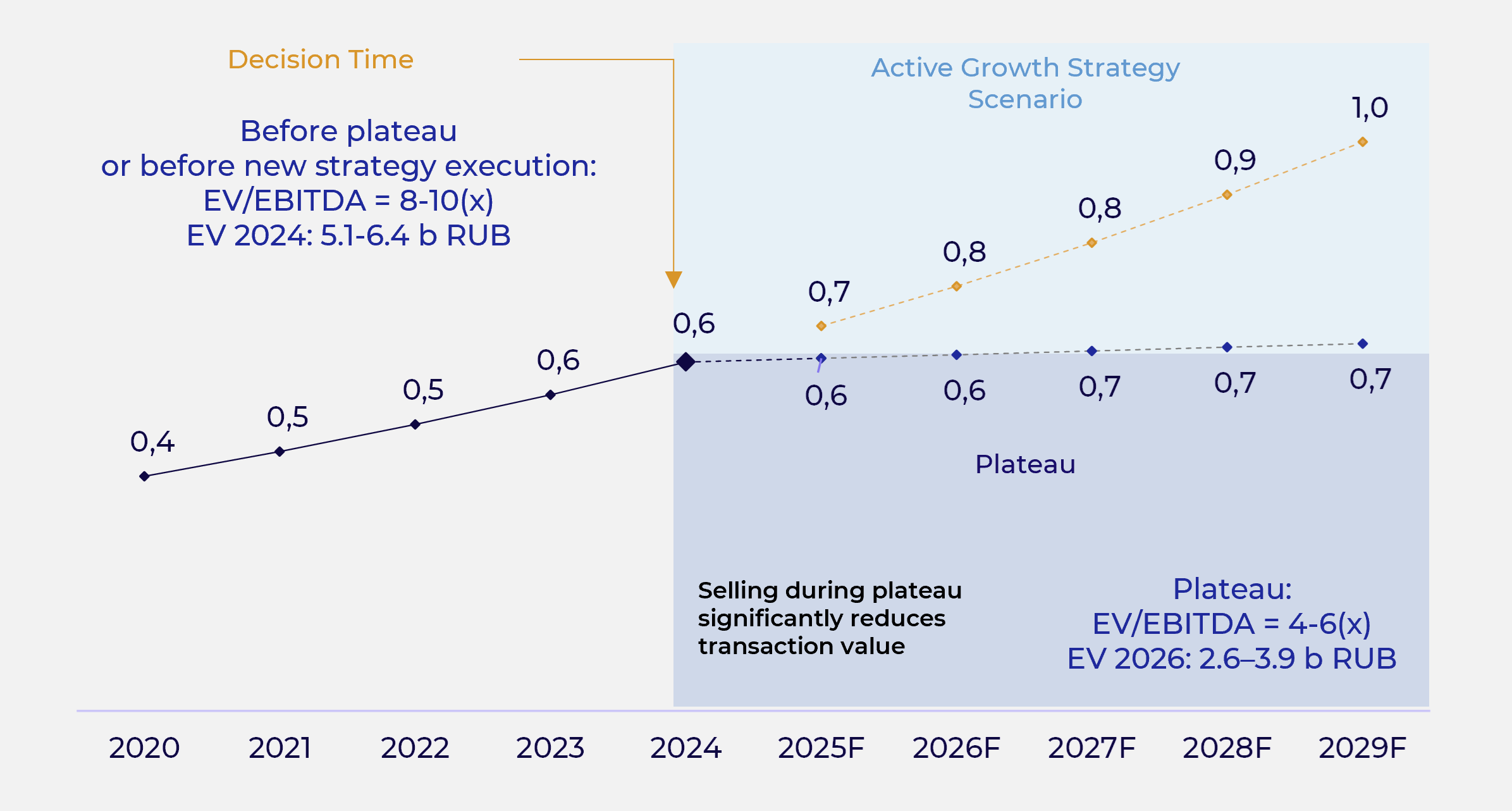Many companies reach a point in their development when growth slows down. On one hand, previously set goals are achieved, sales and profits are stable. On the other hand, stagnation starts creeping in – product and service lines are not being improved constantly; top management and personnel lose their motivation and drive.
If you see this – the company has hit its plateau. Owners often see this stability as a sign of success, but in reality – it is a dire warning of the things to come.
If no active measures are taken at this stage, within 2–3 years:
Symptoms of an approaching plateau signal to the owner that there is a narrow window of opportunity and it’s time to make a key decision about the future of business. Two optimal investment decisions are possible:
Many owners choose a third path – the easiest and yet the least advantageous: they neither sell their business nor pursue active growth strategy, instead drifting along without strategic changes. This leads to erosion of market value even if the cash flows remain stable.
Life develops in cycles, so even if the path of active growth is chosen, sooner or later the owner will detect the signs of an approaching plateau and face the same dilemma again.
If you're ready to invest time and resources – choose the
If the inner drive is gone, but the business is still attractive to market players –
The market value of a business is largely determined by investor perceptions of its future prospects. When investors buy a company or a share of a company, they are essentially buying its future cash flows – or at least, how they perceive them. Less commonly, investors may have an interest in the company’s assets — licenses, equipment, etc. Even less commonly they use this tool to simply get rid of a competitor.
To simplify valuation, buyers and investors often use a method where a company metric (typically EBITDA, but can be something entirely different) is multiplied by a factor (a multiple), and net debt is subtracted – the multiples (or comparables) method.
Investor expectations are always reflected in the multiples. If investors believe growth is slowing down and the company or even the industry as a whole has reached the plateau, the multiples sharply drop. Conversely, if they see a company introducing new technologies and taking active strategic steps to strengthen or gain market leadership, the multiples can increase. Often even within one industry there may be outliers – the best performing companies enjoy higher multiples as the investment community perceives them to be better investments.
This means the period just before the company reaches its plateau is the optimal window for exiting – from that point and on market value declines unless active company development resumes.
Morgan Stanley research confirms this [1] when a company generates value above its cost of capital (ROIC > WACC) [2], EBITDA multiples are significantly higher.
In the case described in Exhibit below, the company displays signs of an approaching plateau. Without a decision to sell or pivot strategy, its value could plummet by 2025-2026.

Many business owners try to “buy time”. The business appears to be operating well and generating stable cash flows, but:
As a result, the company’s profit potential and margins visibly drop – and investors see it too. Multiples fall, and over the next 2-3 years the business may lose significant value.
At this point it is no longer possible to sell the company at valuation multiples the company enjoyed a few years prior, unless the owner undertakes major transformation of the company.
You are likely at a strategic decision-making point if you observe:
The more of these boxes are checked, the more likely it is that you're at a decision-making point: to grow further or to sell.
It’s often hard to assess situation objectively and without a bias. That’s why involving external help is key.
or
Redefining corporate strategy and introducing new people and ideas takes time. Preparing the company for a sale and the actual divesture are even more time consuming, so don’t waste too much time and act.
This article is protected by copyright. The exclusive rights to this article belong to ink Advisory. Quoting is permitted provided the author(s) and source are properly cited. Any use of the article beyond quoting is allowed only with written permission from ink Advisory or if accompanied by the disclaimer: “Exclusive rights to this material belong to ink Advisory.”